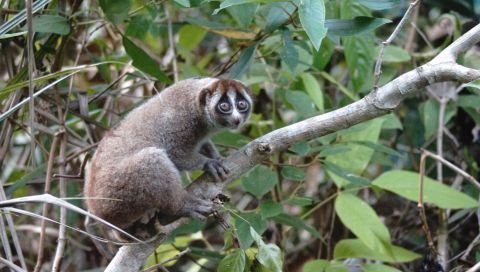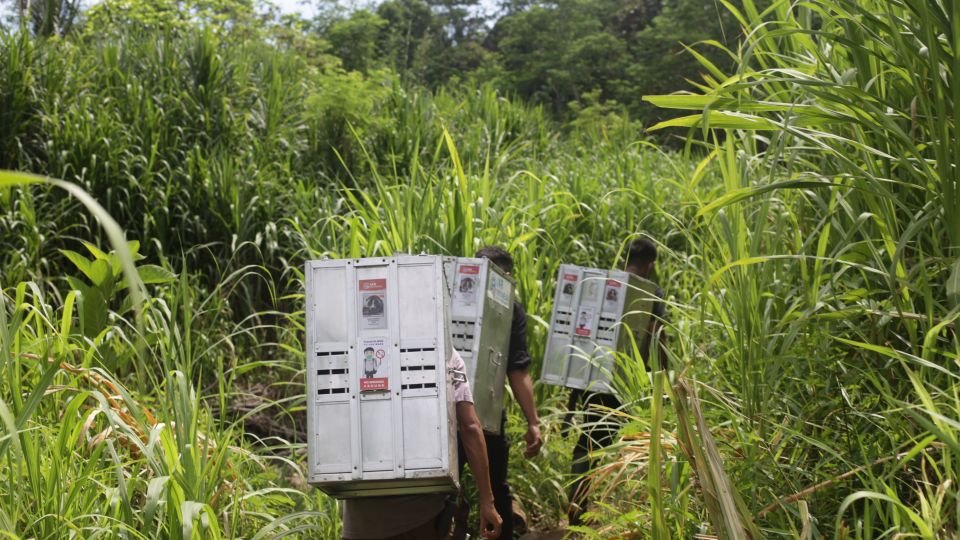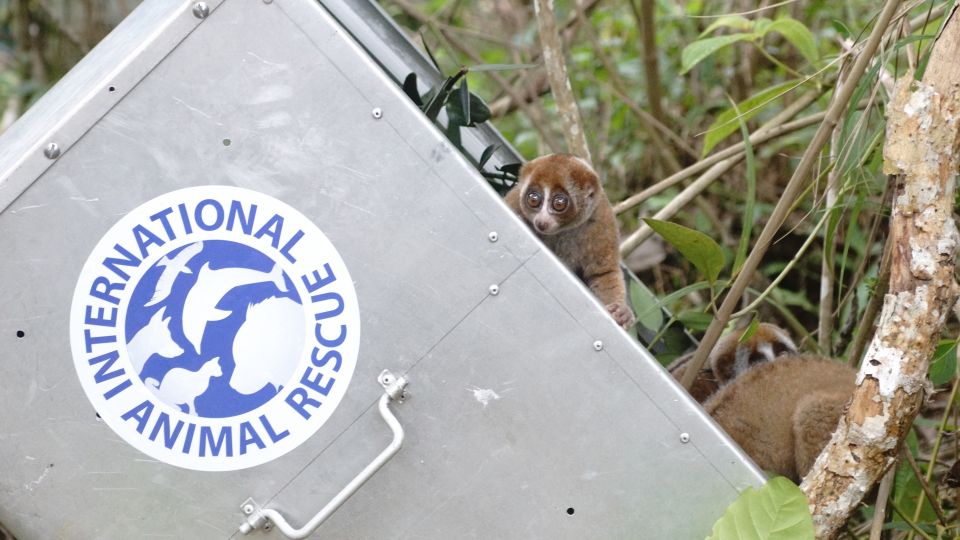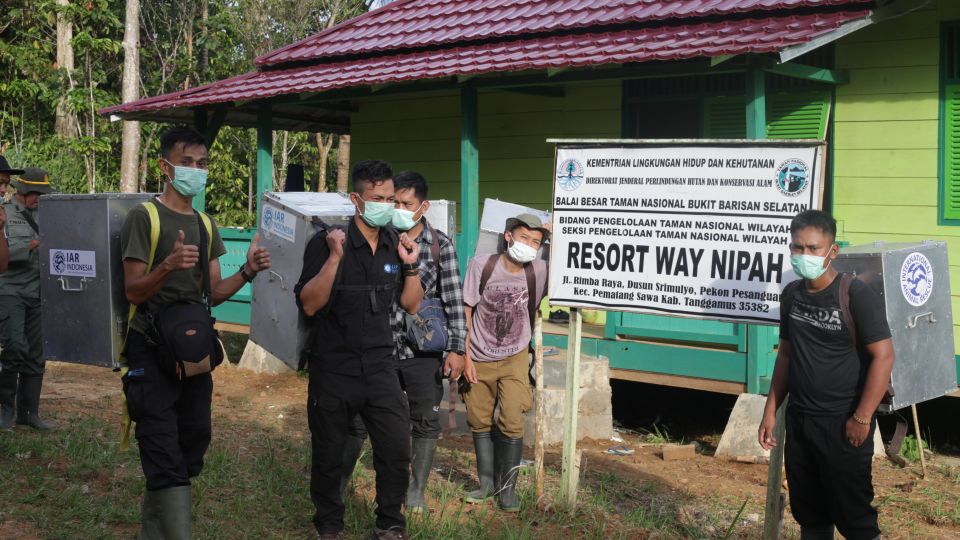
Sixteen Sumatran slow lorises are ready to return to their natural habitat in the Bukit Barisan Selatan National Park (TNBBS) in Lampung, Sumatra.
But first they will spend the next four weeks undergoing habituation to ensure they are ready to be released into the wild. Our vet Imam Arifin Aljani explained that the lorises consisted of eight males and eight females.
They are Kamal, Burik, Friday, Ucil, Sandi, Sunnah, Adele, Hutan, Anis, Duri, T2, Dela, Wana, Romi, Bungsu and Sani.
They were translocated by our team from our Primate Rehabilitation Centre situated at the base of Mount Salak in Ciapus, Bogor, West Java, on Sunday 24 February.

It took nearly 15 hours to reach their new home in the National Park. The journey involved travelling by road, crossing the Sunda Strait and then walking for 7 kilometres on foot to reach the habituation cage. “Most of the lorises are victims of the illegal smuggling of hundreds of lorises which occurred in Merak Port, Banten in 2013.
The rest were surrendered to the Nature Conservation Agency (BKSDA) by people who were keeping the lorises as pets and then became aware that the loris is a protected animal,” said Imam.
Imam added that the lorises were ready to return to the wild after passing through the long treatment and recovery process at our rehabilitation centre. They have undergone intensive rehabilitation to restore their natural instincts.
The condition of the lorises that had been victims of illegal wildlife trading was critical. They were stressed, traumatised, dehydrated and malnourished and had undergone some behavioural changes.
“All of them have undergone a rehabilitation process which starts with a medical examination and period in quarantine, followed by years of behavioural observation and behavioural enrichment. After being declared healthy, they were ready to be translocated to undergo habituation in a pre-surveyed location,” said Imam.
Robithotul Huda, IAR Programme Manager, explained that, at the completion of the rehabilitation period, the lorises were translocated to the Bukit Barisan Selatan National Park in Lampung, Sumatra where they were housed in open-topped, in-situ habituation enclosures to recover from the potential stress caused by transportation and to give them an opportunity to adapt to their new natural surroundings.He added that the enclosures are erected on the release site using plastic fibre sheets and nets as the enclosure walls.

They contain a good representation of trees and plants to provide natural food sources for the lorises. They will spend two to four weeks in the enclosures until they show that they have adjusted to the new environment. While the lorises are undergoing habituation, the team in the field, which includes members of the local community, will continue to observe and record the development of their behaviours every night. If,during the habituation period, all lorises are active and don’t display any abnormal behaviour, then they can be released into the wild.
Returning slow lorises to the wild is not as simple as hunting and catching them. Huda explained that it takes a lot of effort and money to ensure each individual animal is mentally and physically equipped to be released into its natural habitat. The process and stages also take a lot of time and have to be carried out in accordance with strict operational procedures.
In addition, habitat assessment at release sites, habituation and post-release monitoring to provide the best chance of adaptation and long-term survival, are processes that must be followed thoroughly.

Post-release monitoring lasts a minimum of six months and is assisted by the use of radio transmitters. The lorises are fitted with radio transmitters which transmit signals to the team’s radio receivers. The radio transmitters help our team monitor and record the lorises’ progress in adapting to their new environment.
The reintroduction of Sumatran slow lorises into Bukit Barisan Selatan National Park (TNBBS) is a collaboration between IAR Indonesia and TNBBS. Agus Wahyudiono, Head of the National Park, said that the TNBBS area was chosen as a release site for lorises because it is a conservation area and the slow lorises should be safe there from illegal activities.
In addition, based on the results of a habitat assessment survey, it also has a plentiful supply of food and shelter suitable for lorises. Wahyudiono added that Bukit Barisan Selatan National Park is also a World Heritage Site which is rich in natural resources and boasts a wealth of complete ecosystems ranging from coastal ecosystems to lowland rainforests and mountain rainforests. The TNBBS area is able to function as a protected habitat for animals as well as a life-support system for the surrounding communities.

